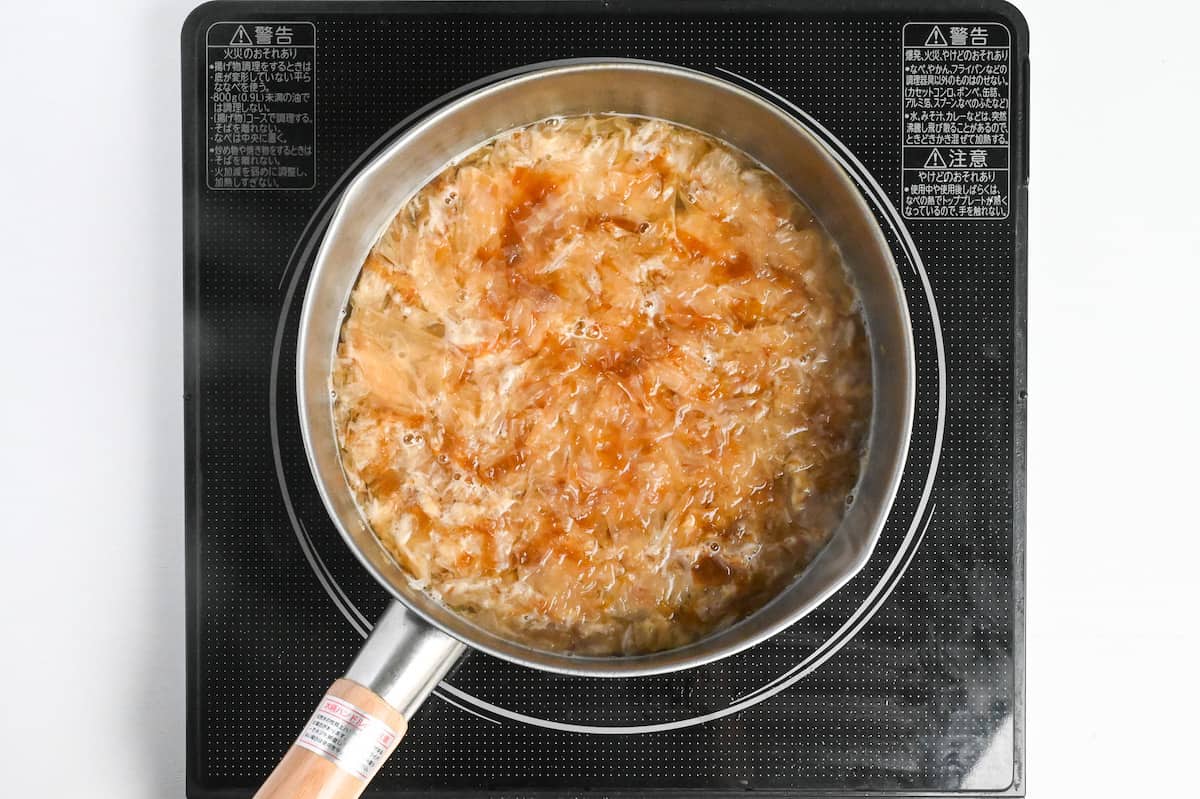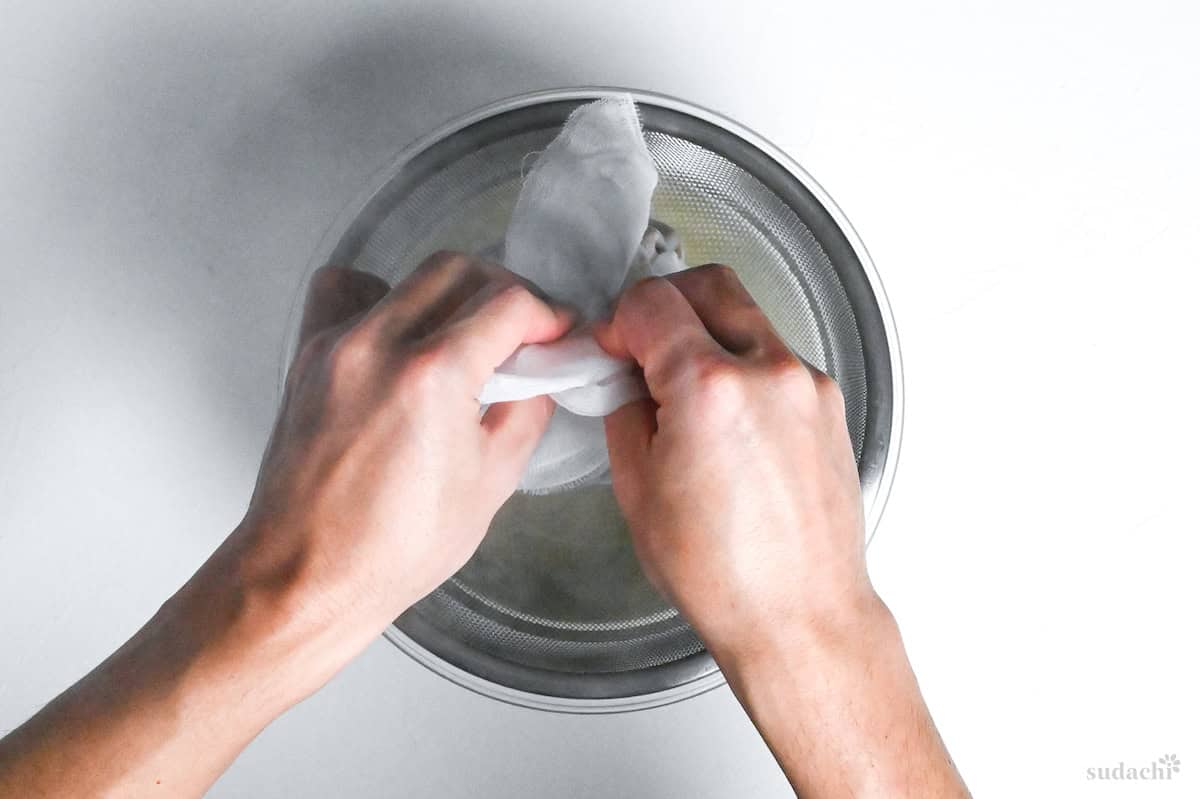Homemade Awase Dashi with Bonito Flakes and Kombu Kelp
Ingredients
Ichiban Dashi (First Extraction)
- 1000 ml cold water
- 5-10 g dried kelp (kombu)
- 100 ml water
- 2 handfuls bonito flakes (katsuobushi) approx 1 cup per handful
Niban Dashi (Second Extraction)
- rehydrated kombu leftover from ichiban dashi
- leftover bonito flakes from ichiban dashi
- 1000 ml water
- 1 handful bonito flakes (katsuobushi) fresh/unused
Instructions
Ichiban Dashi (First Extraction)
- Pour 1000 ml cold water into a pot and add 5-10 g dried kelp (kombu). Let the kombu soak until softened. This will take at least 30 minutes. (You can soak it overnight if you like, put cover with a lid and store in the fridge if you do.)

- Move the pan to the stove and slowly heat over a medium-low or medium setting. Bring to almost (but not quite) boiling, then remove the kombu and save it for later.

- Increase the heat and bring the dashi to a boil. Scoop out any foam that forms on the surface.

- Reduce the heat to a simmer and add 100 ml water. Drop 2 handfuls bonito flakes (katsuobushi) into the pot and let them sink naturally. Do not mix. Steep for 3 minutes. Alternatively, turn off the heat and steep for 5 minutes.

- Line a sieve with a fine mesh cloth (cheesecloth or similar, kitchen paper in a pinch) and place a pan or heatproof bowl underneath. Pour the dashi through the paper towel to catch the bonito flakes. Do not squeeze.

- Use in your favorite Japanese recipes and enjoy!

Niban Dashi (Second Extraction)
- Place the rehydrated kombu and leftover bonito flakes from ichiban dashi back in the pot.

- Add 1000 ml water and a fresh 1 handful bonito flakes (katsuobushi). Bring to a boil over medium heat.

- Once boiling, reduce the heat and gently simmer for 10 minutes. Scoop out any scum that forms on the surface.

- Strain the dashi using the cloth-lined sieve from before.

- Leave until it's cool enough to touch and gently squeeze the cloth.

- Cool and store or use straight away. Enjoy!

Notes
Bonito flakes are made from skipjack tuna so this dashi is not suitable for vegetarians.
Homemade awase dashi can be stored for 1 week in the refrigerator or 1 month in the freezer.